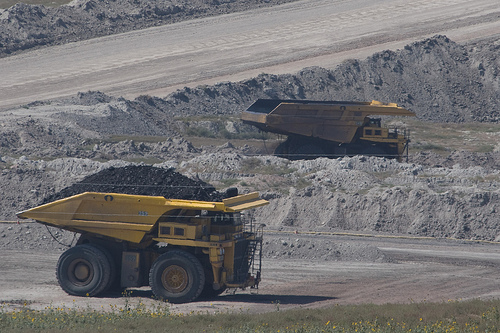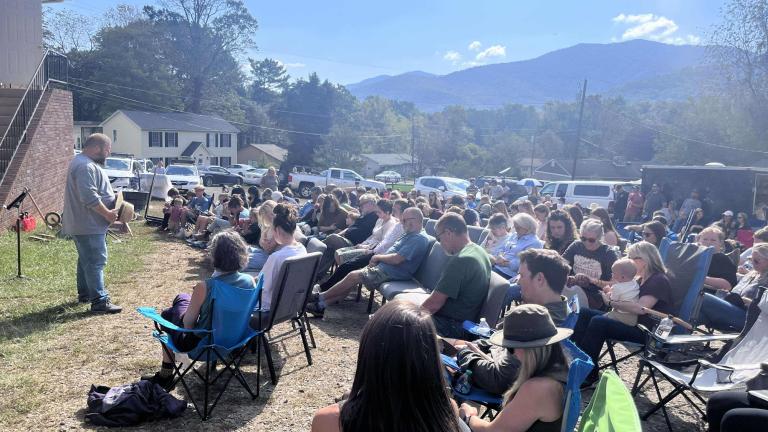
KimonBerlinCoal trucks in the Powder River Basin in Wyoming.
We’ve noted before the sweetheart deals coal companies make with the U.S. government to extract coal on public land. Peabody Coal is paying 25 cents for a ton of coal from federal land that sells for more than $35 a ton — a government subsidy if there’s ever been one.
We’ve also noted how much American coal ends up being shipped overseas, to Europe and especially to Asia.
To connect the dots: The U.S. government is subsidizing cheap coal for China.
From Reuters:
Government auditors have long faulted lax oversight of the coal lease program, saying miners have too much sway. Officials have defended the system, saying their approach is the right one to help utilize a region that provides a large share of the country’s power.
That argument has crumbled as more coal from federal land is being sold overseas and Asian economies anticipate gains from the program meant to keep lights on in American homes.
If U.S. miners can find ports to reach Asian markets easily it could mean hundreds of millions of dollars in additional profits and marginally lower coal prices for countries in those markets. …
That dynamic raises questions about whether taxpayers are essentially helping Asian economies save on energy costs, according to six former officials who served both Democratic and Republican presidents. The possibility of large-scale exports was far from their minds when they managed federal land years ago.
In fact, there’s little question that this is exactly what’s happening — and has been happening for years.
The easy-to-reach coal and sheer size of the Powder River Basin explain the region’s appeal, but the leasing program also gives miners a boost, current and former officials said.
Rather than the government putting blocks of land up for auction, miners select ideal plots at will and rarely face rivals in the cash-bid process that awards new coal leases. Officials tasked with seeking fair market value said exports were not factored into a process that has frequently been faulted by regulators as giving miners undue leverage.
In 1983 the GAO said the government lost $100 million in one coal lease spree in the early 1980s.
A decade later the GAO noted that officials were still not getting the most from coal leases, but “the department’s defense was that it was not seeking to maximize revenues but instead was considering consumers who required electricity and jobs.”
That argument — helping Americans get cheap energy — has been a powerful one. But it loses its legitimacy when we realize that, in addition to U.S. consumers, subsidies are providing cheap energy to our economic competitors.
Such subsidization is unlikely to be curtailed soon. As the presidential candidates fall all over themselves to pander to coal companies and the companies themselves struggle to survive, the government is as unlikely to stem subsidies as the companies are to voluntarily halt exports.
While we have your attention, we might recommend that you revisit this piece about fighting the construction of coal export terminals on the West Coast. For some reason (ahem: “If U.S. miners can find ports to reach Asian markets easily …”), it seems relevant.



